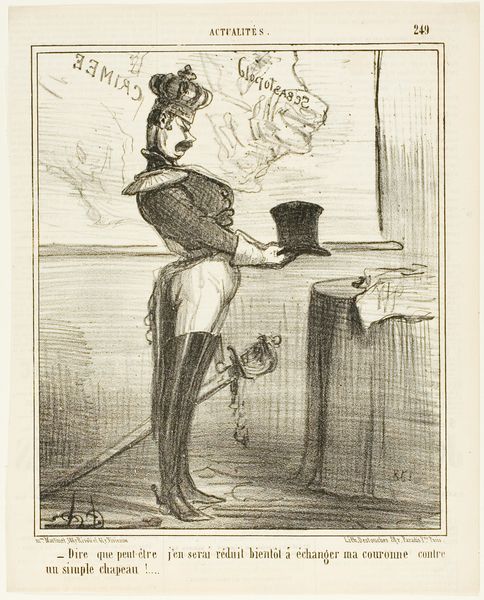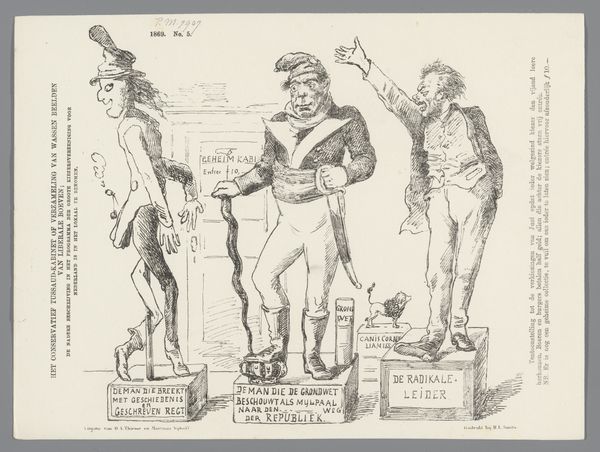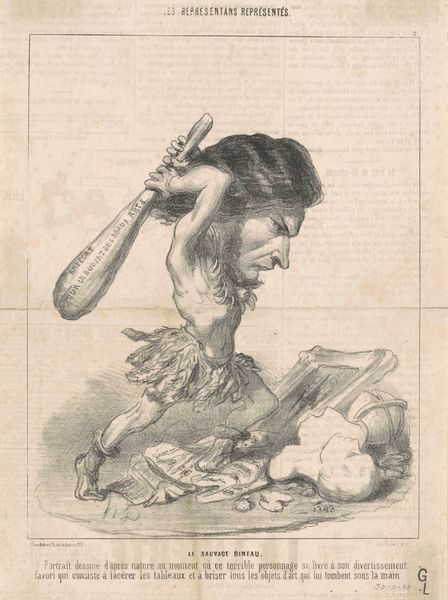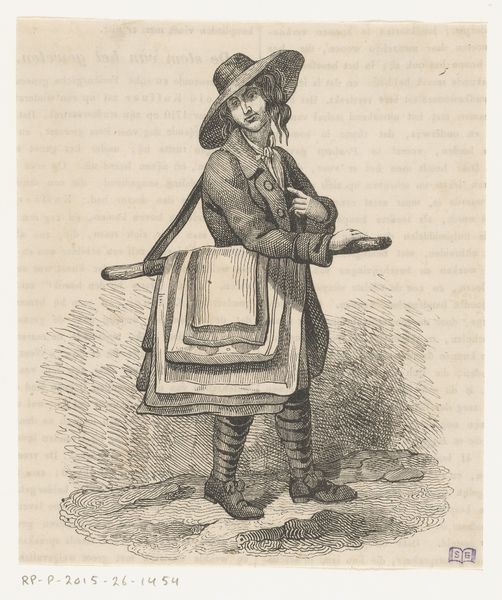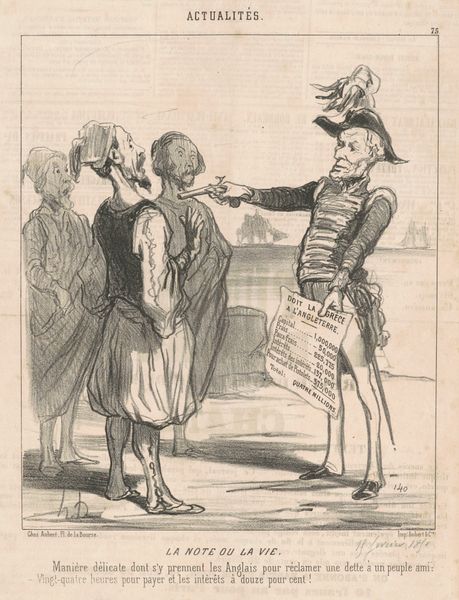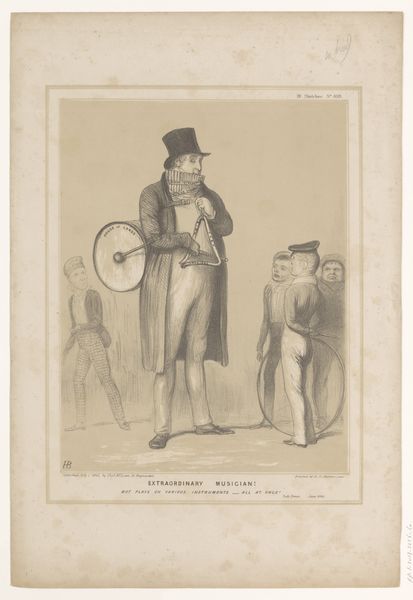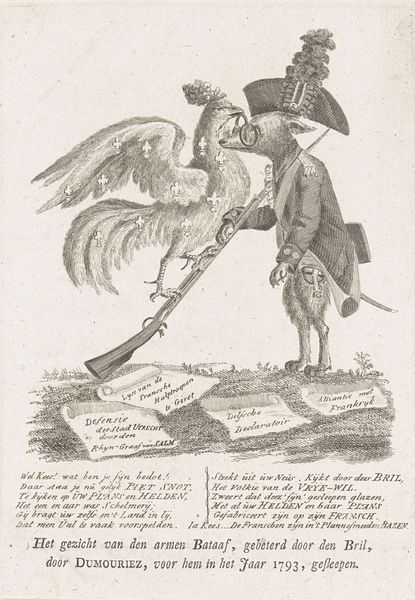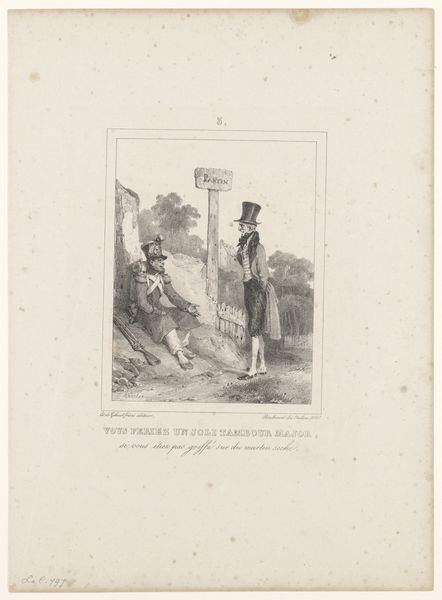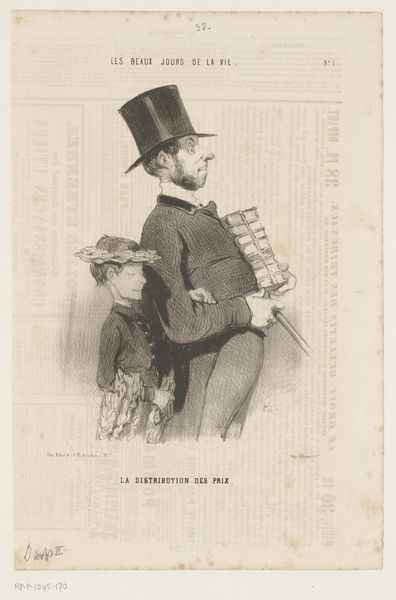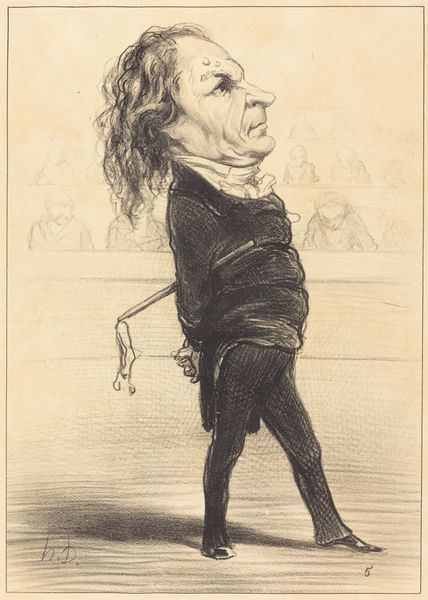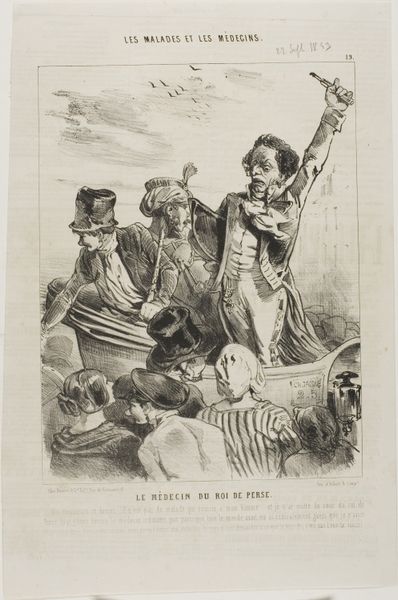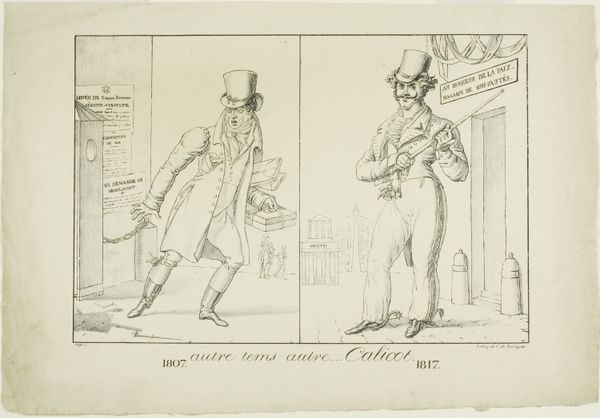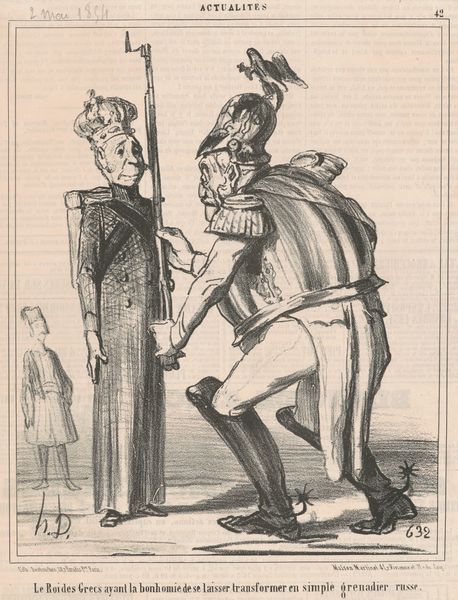
Caricature of Berlioz, from La Caricature Provisoire, no. 1 1838
0:00
0:00
drawing, lithograph, print
#
portrait
#
drawing
#
lithograph
# print
#
caricature
#
romanticism
#
history-painting
Dimensions: sheet: 13 15/16 x 9 3/4 in. (35.4 x 24.7 cm)
Copyright: Public Domain
Curator: Immediately, I see frenzy! It’s a jumble of lines and shapes, giving a chaotic, almost comical first impression. Editor: That's right! What we have here is Benjamin Roubaud's lithograph from 1838, "Caricature of Berlioz, from La Caricature Provisoire, no. 1." This print is currently housed at the Metropolitan Museum of Art. Curator: The subject matter contributes to the organized chaos. Berlioz's head erupts from a sort of stage or theater, overflowing with musical instruments. His expression is intense, a sort of musical madman, don’t you think? The details—the lithographic lines— are meticulously crafted. Editor: Absolutely, this was published in a satirical journal so Berlioz’s image here critiques both his compositional style and his public persona, right after the premiere of his opera Benvenuto Cellini. Roubaud used the relatively new medium of lithography to tap into anxieties of artistic innovation. The instruments poking out seem like weaponry and underscore an almost violent energy that marked his performances. Curator: This caricatured depiction hints at the contentious reception Berlioz faced. And the theater facade further emphasizes the artificiality of his stage productions. Also, I wonder if his image in this periodical would influence the sales, as this era produced commercial print at an industrial scale. Editor: An insightful comment! Roubaud isn’t merely commenting on Berlioz the musician. It's also about the societal structures in place. It questions art's relationship to its audience and examines what the culture consumes and how they receive the narratives set by these composers and directors. Curator: Looking closer, the lithographic technique enables incredibly fine details, right? Notice how the texture creates drama. There’s even text mimicking theater advertisements to enhance the visual satire, right? Editor: I see your point. Through its method of production, the lithograph mirrors the broader socio-political context that it critiques by revealing popular perceptions. A piece like this encourages the audience to become an informed spectator. Curator: Considering both its context and its masterful use of lithography, this image really is a microcosm reflecting cultural dialogue and power dynamics in 19th-century artistic circles. Editor: Agreed. It gives an impactful experience when looking at art to think more critically about these historic moments that defined the legacy of people and cultures.
Comments
No comments
Be the first to comment and join the conversation on the ultimate creative platform.
